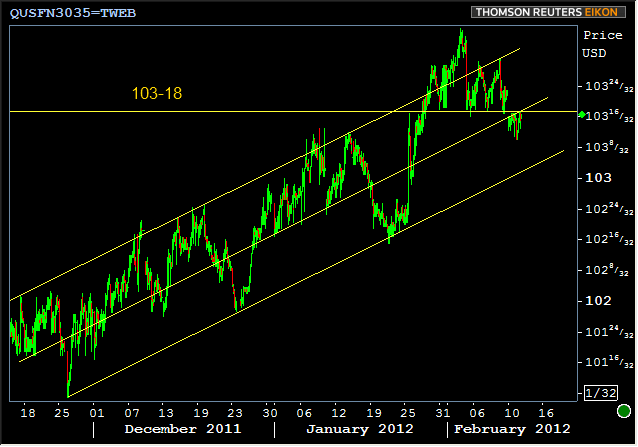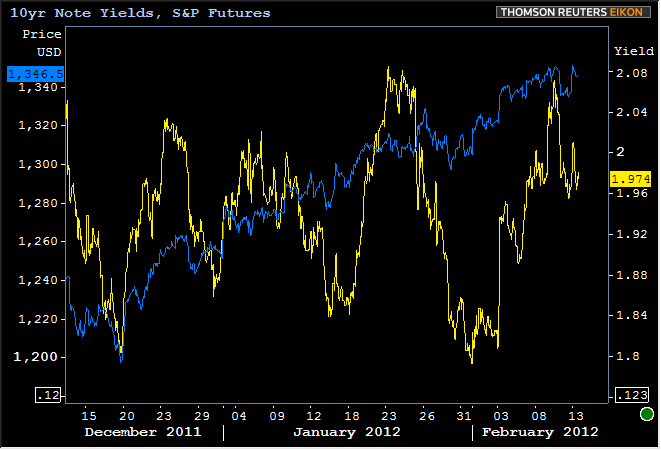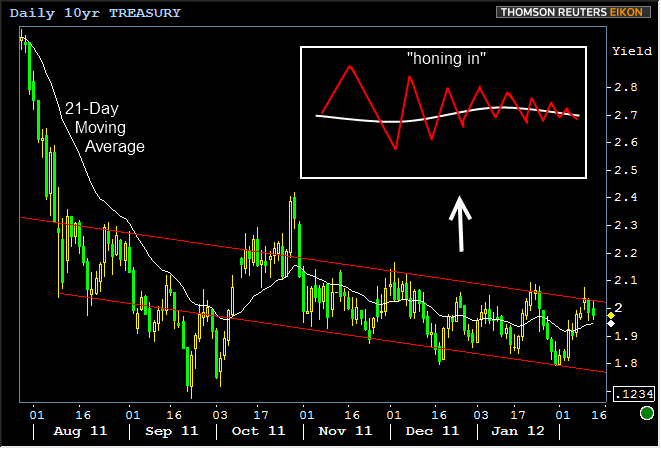MBS and Treasuries continue to trade at significantly improved levels from this morning. Bond markets put in their first major bounce shortly after the domestic open on rumors that the private sector announcement that was set to follow Wednesday's Eurogroup meeting would be delayed. Since then, limited European headlines (none really...) and non-existent economic data left today's scheduled Fed buying as the primary market mover.
Even though today's Fed buying was in the longest maturities, it provided an excuse to run the ball back up the field after overnight weakness. Volume has been quite light as markets are no doubt more interested in Wednesday's Greece-related headlines than those seen yesterday and this morning. 10's moved almost precisely to Friday's lowest yields and held there through the end of the Fed operation, bouncing back higher afterwards, but not before catching some support just over 1.98. That bounce is manifested below as Fannie 3.5's bounce at 103-14.
(video source: MBS Live)
103-18, as the video overlay points out, is more than just an incidental level of technical resistance for MBS. It also provided some brief resistance in late January, before being broken and serving a majority of February as absolute support. It's one of the most prominent pivot points in this historically high range of MBS prices. While we trade under it, we're more interested in the next technical levels below us: a horizontal pivot around 103-10 (not pictured below) as well as the lowest of the yellow lines below--a sort of last line of defense for the longer term trend channel. Crossing below either of those lines constitutes a potentially negative shift for MBS, and one that would probably shift lock biases, at least in the short term.

Bond market directionality continues to be highly uncertain, almost as if 10's are in an exaggerated holding pattern, experiencing big sideways swings while stocks calmly trend upward.

While things have been more sideways recently, the longer-term trend is still slightly bullish, continually bouncing back and forth around moving averages that are moving very slightly lower in general. The chart below shows the 21-dMaay moving average for 10yr yields just as one example of this "honing in" phenomenon where prices or yields move in generally decreasing orbits around some metric of central tendency. As you can see, that honing-in had been leading 10yr yields into a narrower orbit until late January when the most recent round of Greek bailout drama took center stage. As an aside, we think a confirmed breakout of the upper red line would be a significant development and a potential shift away from the prevailing bullish trend.






